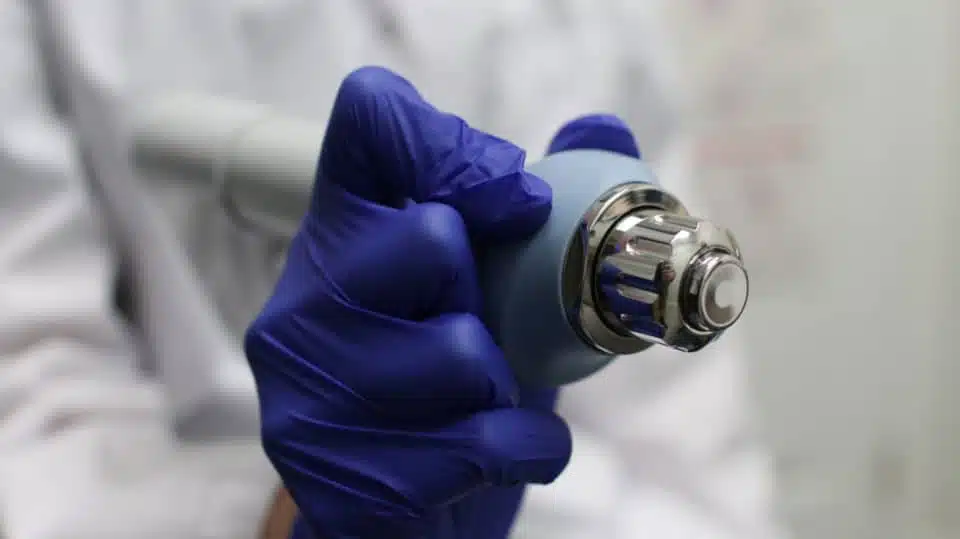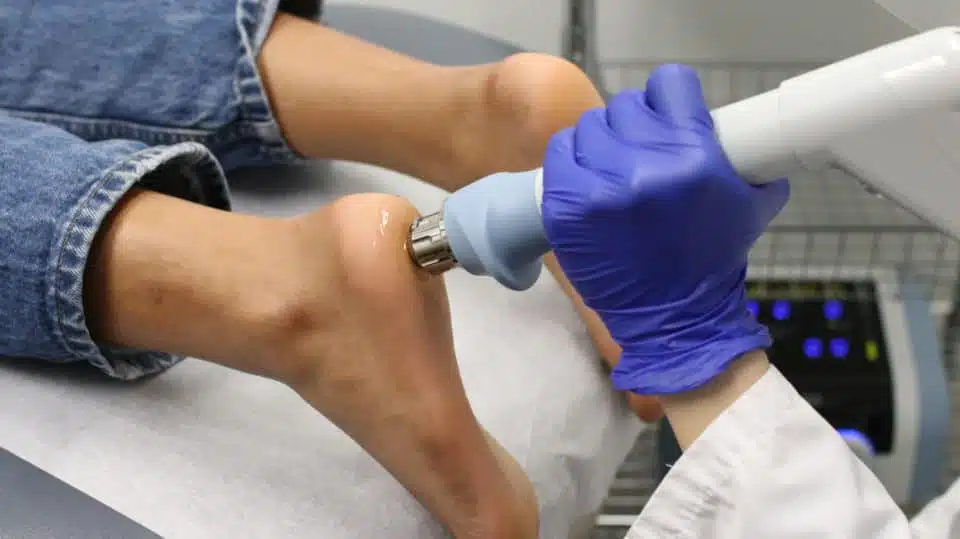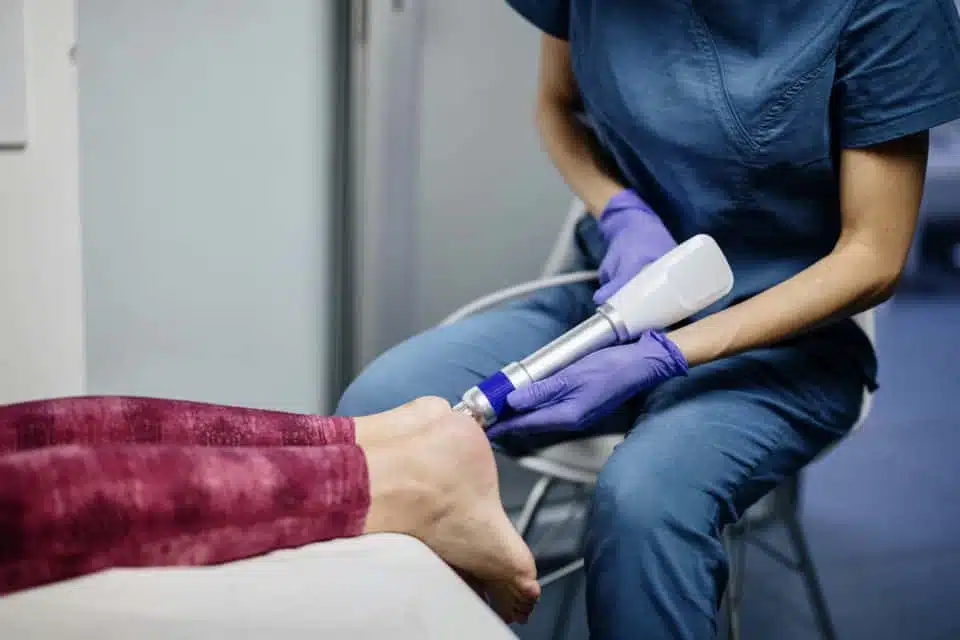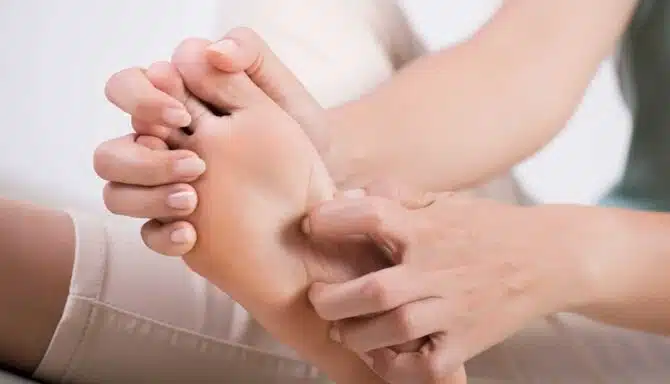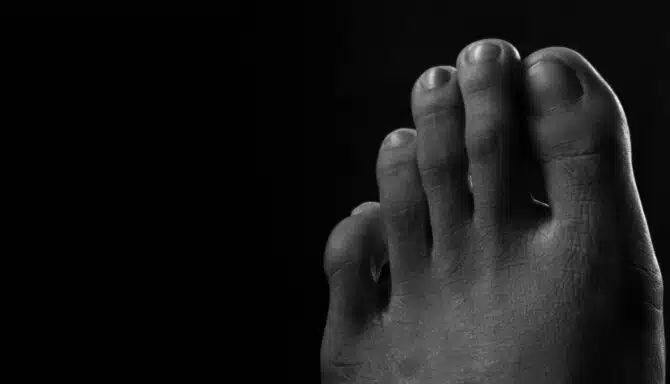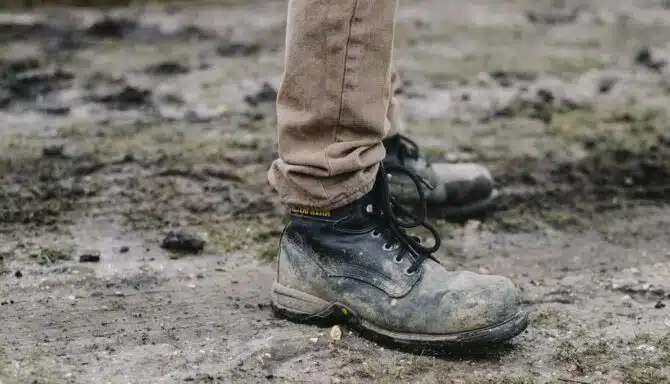Extracorporeal shockwave therapy (ESWT) – commonly called “shockwave therapy” – is an innovative, non-surgical treatment method used in a variety of healthcare fields, including chiropody. Shockwave therapy involves applying high-frequency, high-energy pulses directly to an injury.
First introduced in the 1980s, shockwave treatment was primarily used to break up kidney stones in the body (non-invasive lithotripsy). Since then, scientific sources validate it as an effective and safe way to treat musculoskeletal conditions, soft tissue injuries (tendons, ligaments, muscles and fascia) and repetitive strain injuries. Progressing over the years, this treatment is widely praised for its ability to effectively activate and enhance the body’s natural process for healing injuries. It is a great option for people who have struggled with a foot problem for a long time, and would like a non-invasive treatment option to reduce their pain.
You may be wondering if this new procedure is for you, especially if you’re looking for a new way to treat your foot pain. That said, since it involves machinery (and maybe some foreign terminology), you likely also have some questions!
In today’s blog (and the video below), we’ll explore the following questions and concerns:
- What is shockwave therapy?
- What does shockwave therapy do?
- How does it feel?
- Are there any known side effects of shockwave therapy?
- What is shockwave therapy used for?
What is Shockwave Therapy?
Shockwave therapy is a non-invasive (no break in the skin) procedure that delivers shock waves to injured soft tissues. It is a valuable and modern way of restoring mobility and relieving pain for people with several foot conditions.
The treatment is performed with a special machine (a shockwave therapy machine). First, your chiropodist will apply a gel (similar to propylene glycol, the gel used during ultrasounds) to the areas of the foot requiring treatment. The chiropodist will determine the right frequency, pressure and number of pulses best suited for your injury. They then use an applicator to move their way around the foot and deliver these “shocks”, ensuring they deliver pulses to the appropriate areas.
So, at this point you’re probably wondering, what exactly are these shockwaves? Rest assured, shockwave therapy sounds more alarming than it actually is! Rather than some horrifying electrical current, the shockwaves are actually sound waves applied to your foot via high-energy pulses. Furthermore, the applicator and gel work together as a regulating barrier that protects you from harm.
Your chiropodist will observe how well you’re handling the treatment during the process. You will both want maximum healing benefits, but everyone reacts to new treatments differently. Your chiropodist will apply the shockwaves in segments to see how you’re feeling and tolerating the treatment. They’ll adjust the intensity according to your comfort levels and work your way up over time. The higher the intensity, the more effective the treatment.
It’s important to remember that shockwave treatment application varies according to your injury. The more pressure used during treatment, the deeper the sound waves penetrate. For instance, a bony injury near the skin’s surface will need less pressure from the machine’s applicator than an injury affecting deeper tissue.
What Does Shockwave Therapy Do?
You may be questioning how sound waves can help with pain relief. Shockwave treatment is all about pressure and mechanical energy, which work harmoniously to achieve several benefits. You can think of shockwave therapy as an enforcer – a way to trigger your body to work hard and make your injury feel better. The benefits of shockwave therapy are multi-fold; it can stimulate blood flow, boost your body’s natural healing response, break down scar tissue, reduce pain and more.
Shockwave therapy’s effect is similar to what happens when you work out: When we exercise and strengthen our muscles it causes small microtears, which activates our body’s inflammatory response. The inflammatory response plays a vital role in how our body heals itself when injured. It works by increasing blood flow to the injured muscles. It also triggers delivery of oxygenated blood, nutrients and white cells to the injury, which nourishes, heals and regenerates the muscles, and makes them stronger.
Shockwave therapy works the same way in that the mechanical energy from the shockwaves also causes small microtears (just like when we work out), which directs your body’s resources to healing the area being treated.
Essentially, shockwave triggers your body’s initial natural response to an acute injury (a sudden, short-term injury). When we first get an injury, the inflammatory response is activated and our body works in peak form to heal the area. However, when an injury becomes chronic, the body’s response changes, and the healing process stalls; shockwave brings it back to its prime.
In addition to accelerating the body’s healing response, shockwave therapy also breaks down scar tissue, releases tight muscles, creates new blood vessels, and reduces pain. Click here to learn more about how shockwave therapy works, and its many benefits.
What is Shockwave Therapy Used For?
At Feet First Clinic, specialists can use shockwave therapy to help patients manage a selection of conditions, including:
- Achilles tendonitis
- Plantar fasciitis
- Morton’s neuroma
- Joint and muscle strain in the feet
- Tendon and repetitive strain injuries in the feet
- Tight tendons in the feet (which can coincide with hammertoes and bunions)
Tendon and muscle issues associated with flat feet (after or in conjunction with other treatments)
How Does It Feel?
Shockwave therapy feels how it sounds, like short pulses to the skin. There may be some slight discomfort, but this usually only lasts for the duration of the treatment, which is generally just a few minutes. Discomfort may also be more noticeable if the applicator is used on a bony area of the foot.
There are no concerns about being immobile after getting shock treatment on your feet. You can walk to and from your treatment, however, it might be wise to avoid strenuous exercise for a few days.
One of the great things about shockwave therapy is that it’s a form of pain relief in and of itself: the energy pulses reduce one of the neurotransmitters (called “Substance P”) that make us feel pain. When Substance P is reduced, so are our pain levels. That’s why many patients notice feeling less pain shortly after treatment.
Shockwave Therapy Side Effects
With all this discussion of shockwaves, it’s normal to have concerns about possible side effects. Medical shockwave therapy may sound intimidating or unusual, but the good news is side effects are incredibly rare due to it being a non-invasive, non-surgical procedure.
Usually, shockwave therapy doesn’t come with any side effects. However, some people may notice a slight reaction. This can include:
- Reddening of the skin
- Light bruising
- Mild soreness or swelling
These effects usually subside relatively quickly, with soreness abating after 24 hours. You can speak to your chiropodist about how to cope with potential side effects.
It’s important to note that people with certain medical conditions, such as nerve disorders, cannot have shockwave therapy. Be sure to provide a full medical history to your chiropodist prior to treatment to ensure shockwave therapy is safe for you. You can see a full list of conditions that are contraindicated for shockwave therapy on our shockwave therapy information page.

